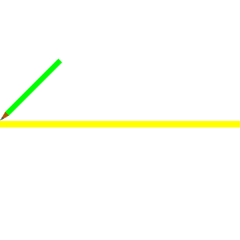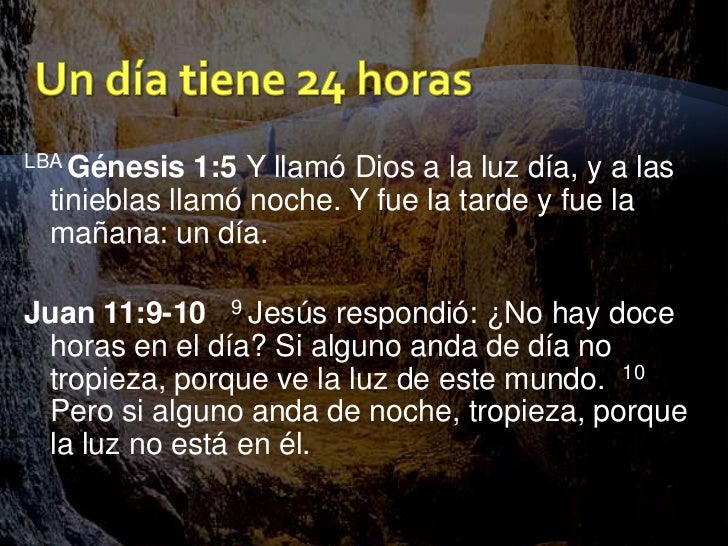|
|
GIZE, STONEHENGE, CHICHEN ITZA, ETC,ETC: PIRAMIDES EN CHINA (ALINEACION CON ISLA DE PASCUA)/SOLSTICIOS Y EQUINOCCIOS
Choisir un autre rubrique de messages |
|
Réponse |
Message 1 de 38 de ce thème |
|
La Numerología no nos da buenas noticias de esta fecha arriba mencionada ya que los números 29 y 11 "No son auspiciosos". El número 29 es considerado como: "El Karma más pesado de todos los números" y el número 11, el siempre misterioso el cual ha jugado constantemente un rol protagónico en "Acontecimientos muy negativos".
(11+8+2008)=(11+8+10) y esto suma 29 y 29=(2+9)=11.
Del laberinto se dice:
- El edificio más grande construido por el hombre.
- Esta construcción tardó 365 años (Desde el 4.608 hasta el 4.243) A.C.
- Contiene el "Círculo de Oro", la cual es una legendaria habitación a la que se hace referencia el "Libro de los muertos". Esta hecha de granito y recubierta en oro, lleno con un legado tecnológico que nos dejó una civilización perdida, mucho más antigua que el mismo Egipto.
- El conocimiento astronómico de los Egipcios está escrito en grandes paredes, todos sus hallazgos astronómicos pueden leerse en los jeroglíficos y todas las constelaciones estelares figuran aquí en un enorme zodíaco.
- Muchas paredes pueden moverse y esto lo convierte en un laberinto real. Los textos antiguos hablan sobre personas que perdieron su camino y murieron, también se habla de habitaciones secretas que se encuentran en este laberinto; llenas de utensillos y documentos de una civilización que floreció a una escala mundial hace miles de años.
- Contiene habitaciones con documentos sobre la historia de Egipto y su conocimiento astronómico.
- Alineadas con los puntos cardinales, y con los equinocios…
Y extrañamente alineados en una misma recta con una inclinación de 30 grados con respecto al ACTUAL ecuador!

Las pirámides de China no las conocen muchos…el gobierno chino se ha encargado de encubrirlas…ya que las leyendas dicen que sus constructores fueron gigantes rubios de ojos azules…
Pero en China tenemos más de 100 pirámides…y entre ellas destacan las "Giza" de China…
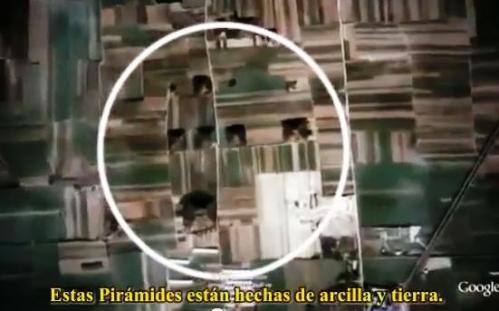
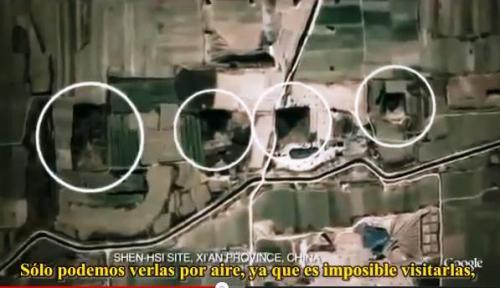
Recordar que Giza tiene 675 feet de base!
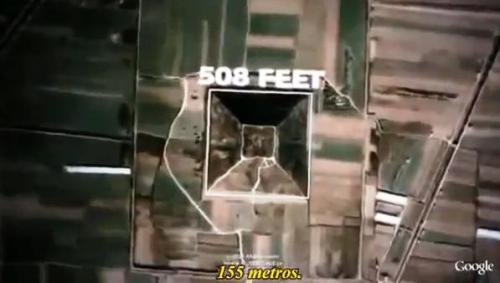
http://virgiliotovar.blogspot.com.ar/2012/10/esfinge-2053-dias-y-contando.html |
|
|
|
Réponse |
Message 24 de 38 de ce thème |
|
En el continente africano, en la localidad de Casablanca en Marruecos, una gran plaza y construcciones piramidales sobre trazados hexagonales se emplazan justo en el paralelo 33.
|
Por la unión de los ríos Tigris y
Éufrates pasa el paralelo 33. |
Sobre el Golfo Pérsico,la Mesopotamia formada entre los ríos Tigris y Éufrates, hoy Irak, fue la cuna de la civilización Sumeria, donde el paralelo 33 norte pasa exactamente en la zona de unión de ambos ríos. Algunos textos bíblicos sugieren que aquí existió el Jardín del Edén. Actualmente en esta zona ocupada por Estados Unidos después de devastadores conflictos, se han construido refinerías y gasoductos.
Bagdad (se encuentra en la latitud 33º 33’N) y el palacio de Saddam Hussein se construyó en esta posición. La milenaria ciudad de Damasco, en Siria corresponde también a la línea citada. Países como Irán y Afganistán son atravesados por el paralelo 33.
Hemisferio Sur
Bajando hacia el paralelo 33 en el hemisferio sur, en el océano Pacífico se encuentran las islas Juan Fernández, más conocidas por la historia del náufrago Robinson Crusoe. En una de sus dos islas, pertenecientes a Chile hoy denominada Alejandro Selkirk, (nombre del náufrago escocés que inspiró al escritor Daniel Defoe), allí funcionó un penal de reclusos y existe una falla natural llamada las Tres torres.
|
Palacio presidencial de La Moneda, en
Santiago de Chile, sobre el paralelo 33. |
Ya en la costa de Sudamérica, en Chile encontramos en la ciudad de Viña del Mar la residencia presidencial y el palacio Ross construido en 1890 por la elite europea justo sobre la línea.También el faro de Valparaíso se eleva como indicador. Unos pocos kilómetros hacia el sur-oeste exactamente a 33º 33’ en la capital Santiago se ubica el parque a la Bandera. En Santiago, el palacio presidencial La Moneda se construyó sobre el paralelo en cuestión. Recordemos también en Chile el famoso rescate de los 33 mineros en la mina “San José”.
|
La flamante ciudad de La Punta, en la provincia
de San Luis, se construyó en el paralelo 33. |
Atravesando la cordillera de los Andes a la altura del glaciar y nevado Juncal del lado chileno, y los Tres Mogotes y el glaciar Victoria en Argentina, el paralelo 33 pasa por la ciudad de Mendoza.
En la provincia de San Luis hace pocos años se ha diagramado y construido la flamante ciudad de La Punta donde existe una réplica a escala natural del Cabildo de Buenos Aires tal cual se veía en 1810, antes de las reformas. En el pueblo Villa de la Quebrada también en provincia de San Luis se recrearon estatuas con escenas de la pasión de Cristo. La localidad de El Trapiche y el dique artificial La Florida, zona de avistamientos de ovnis, pasan por dicho paralelo.
|
En La Punta, réplica a escala natural
del Cabildo de Buenos Aires, tal
como era en 1810. |
En San Luis, sobre el comentado paralelo se erige el volcán El Morro eleva su cráter de 3 km de diámetro a 1500 metros de altura, solitario sobre una enorme llanura en la línea del paralelo 33.
En la provincia de Córdoba, la línea hace su paso por la ciudad de Río Cuarto. El río fue bautizado así por los españoles ante la imposibilidad de pronunciar el nombre indígena, Chocancharava.
Las ciudades de Gualeguay y Gualeguaychú en la provincia de Entre Ríos se asientan sobre el paralelo 33. En esta última el paralelo coincide con la calle 3 de Caballería donde se construyeron las parroquias Nuestra Señora de Luján y Nuestra Señora de Fátima.
|
| La ciudad y departamento de Treinta y Tres. |
En Uruguay, existe una ciudad llamada Treinta y Tres justo en el paralelo coincidente; su nombre se debe a la heroica gesta de los 33 orientales comandados por el General Lavalleja y Manuel Oribe, donde un grupo de 33 hombres derrotan a un ejército español mucho más numeroso en 1825.
Si el GPS y los mapas satelitales de computadora no mienten, la cuestionada pastera Botnia en la localidad uruguaya de Fray Bentos, eleva su imponente chimenea indicando el paso del paralelo en cuestión a orillas del río Uruguay.
|
La contaminante pastera Botnia, frente
a Gualeguaychú. |
Ciudad del Cabo, en Sudáfrica y Sídney en Australia, indican también que fueron montadas sobre la línea.También se observan coincidencias con algunos accidentes geográficos naturales tanto en el hemisferio norte como en el sur.
Aunque la naturaleza del Creador no funciona al azar, no veo importancia para entrar en detalle, sobre los llamados chakras de la Tierra, que responden a otras coordenadas y principios.
El Paralelo 33 pasa por Rosario, Argentina
La pujante ciudad de Rosario está emplazada sobre el paralelo 33, donde Manuel Belgrano enarboló por primera vez la Bandera Argentina y hoy se encuentra el Monumento a la Bandera construido en 1957, en el paralelo 32º 56’ 52”.
|
Valparaíso, Santiago, Mendoza, La Punta, San
Luis, Río Cuarto, Rosario, Gualeguay, todas
ciudades situadas sobre el paralelo 33. |
La pequeña Villa del Rosario, se transforma en una pujante ciudad a finales del siglo XIX con la llegada de inmigrantes de todo el mundo. La traza exacta del paralelo 33 atraviesa el extremo sur de la ciudad, coincidiendo con la avenida Nuestra Señora del Rosario, ex Lucero.
Exactamente enclavado sobre el río Paraná y el paralelo 33 se encuentra el frigorífico Swift, construido en 1924, su enorme chimenea se eleva en la desembocadura del arroyo Saladillo como una especie de indicador.
|
El paralelo 33 atraviesa el sur de Rosario
siguiendo la avenida del Rosario, ex Lucero. |
En línea con el paralelo, separadas a distancias iguales entre sí, se ubican las parroquias Ntra. Sra. de la Merced, San Casimiro y Ntra. Sra. de la Consolata. También se construyeron la Iglesia Metodista y otros templos evangélicos. En otras ciudades del mundo, en ambos hemisferios se observa un emplazamiento preferencial de templos y monumentos cristianos.
Las Plazas O´ Higgins y Las Heras de Rosario, se ubican sobre el paralelo, ambas presentan el mismo diseño de diagonales. Otro dato curioso, tema que ha dado mucho que hablar en los últimos años, fuela construcción del casino, hotel, centro de convenciones y entretenimiento City Center (CC=33) ubicado de forma exacta sobre el paralelo 33.
|
Desembocadura del arroyo Saladillo en el río
Paraná, justo en el paralelo 33. A la izquierda
la chimenea del Swift. |
Son sólo datos y cabos sueltos, pero algo parece indicar que existe una preferencia de emplazar sobre esta línea geográfica de longitud,construcciones que cumplen determinada función social ya sea política, industrial, religiosa etc.
En conclusión, podemos decir que estos pocos datos aportan una visión que excede la casualidad. El número 33 parece ser una especie de “herramienta” utilizado con diversos fines, según las intenciones puras o impuras de los constructores.
Para quien se interese en el tema puede encontrar mucha información al respecto, tal como sucede con otros tantos enigmas y misterios de este planeta.
|
|
|
|
Réponse |
Message 25 de 38 de ce thème |
|
 the Apple
| milky way in Simple Gematria Equals: 119 |
( |
m 13 |
i9 |
l 12 |
k 11 |
y 25 |
0 |
w 23 |
a1 |
y 25 |
) |
| queen mary in Simple Gematria Equals: 119 |
( |
q 17 |
u 21 |
e5 |
e5 |
n 14 |
0 |
m 13 |
a1 |
r 18 |
y 25 |
|
| hebrew calendar in Simple Gematria Equals: 119 |
( |
h8 |
e5 |
b2 |
r 18 |
e5 |
w 23 |
0 |
c3 |
a1 |
l 12 |
e5 |
n 14 |
d4 |
a1 |
r 18 |
| mary magdalene in Simple Gematria Equals: 119 |
( |
m 13 |
a1 |
r 18 |
y 25 |
0 |
m 13 |
a1 |
g7 |
d4 |
a1 |
l 12 |
e5 |
n 14 |
e5 |
|

|
|
|
|
Réponse |
Message 26 de 38 de ce thème |
|
|
|
 |
CHILE-SAN MARCOS DE ARICA/ARCA PERDIDA |
20 |
BARILOCHENSE6999 |
26/10/2019 23:09 |
 |
SAN MARCOS DE ARICA (CHILE)/ESCALERA DE JACOB |
16 |
BARILOCHENSE6999 |
26/10/2019 23:09 |
 |
MARIA DE SALOME, MADRE DE SANTIAGO Y JUAN=22 DE OCTUBRE=SAN JUAN PABLO II |
4 |
BARILOCHENSE6999 |
26/10/2019 23:04 |
 |
ESPOSA DE PIÑERA, SANTIAGO DE CHILE, PARALELO 33, "INVASION ALIENIGENA" |
4 |
BARILOCHENSE6999 |
26/10/2019 23:02 |
 |
MARIA DE SALOME, MADRE DE SANTIAGO Y JUAN=22 DE OCTUBRE=SAN JUAN PABLO II |
1 |
BARILOCHENSE6999 |
26/10/2019 22:52 |
 |
MARIA DE SALOME, MADRE DE JUAN Y SANTIAGO, SU DIA ES EL 22 DE OCTUBRE |
6 |
BARILOCHENSE6999 |
26/10/2019 22:43 |
 |
MARIA MAGDALENA ES UN FENOMENO CATOLICO |
18 |
BARILOCHENSE6999 |
26/10/2019 22:42 |
 |
¿PORQUE EL PAPA JUAN PABLO II FUE EL PAPA DE LA CAIDA DEL MURO DE BERLIN? |
21 |
BARILOCHENSE6999 |
26/10/2019 22:41 |
 |
YHWH ES LIBERTARIO (NUNCA ENDIOSES AL ESTADO) |
32 |
BARILOCHENSE6999 |
26/10/2019 22:34 |
 |
SANTIAGO DE CHILE (PARALELO 33)-CAMINO DE SANTIAGO-11/9/73=CAIDA DE ALLENDE |
47 |
BARILOCHENSE6999 |
26/10/2019 22:33 |
 |
TRANSFIGURACION=33=PARALELO 33=CRISTO, ELIAS Y MOISES; JUAN, PEDRO Y SANTIAGO |
593 |
BARILOCHENSE6999 |
26/10/2019 22:29 |
 |
ARGENTINA, BOLIVIA Y CHILE ( LA ARABIA SAUDITA DEL SIGLO XXI)-LITIO |
3 |
BARILOCHENSE6999 |
26/10/2019 22:24 |
 |
EL RESCATE DE LOS 33 CHILENOS FUE EN OSHANAH RABBAH |
188 |
BARILOCHENSE6999 |
26/10/2019 22:23 |
 |
EL RESCATE DE LOS 33 CHILENOS FUE EN OSHANAH RABBAH |
178 |
BARILOCHENSE6999 |
26/10/2019 22:23 |
 |
CHILE |
59 |
BARILOCHENSE6999 |
26/10/2019 22:23 |
 |
CHILE ES EL ORGULLO LATINOAMERICANO (UN PAIS QUE SALIO DEL RELATO BANANERO) |
3 |
BARILOCHENSE6999 |
26/10/2019 22:22 |
 |
¿PORQUE HAY ANARQUIA EN CHILE Y NO EN VENEZUELA? ESTE MUNDO ESTA LOCO, LOCO |
6 |
BARILOCHENSE6999 |
26/10/2019 22:22 |
 |
CABALLO DE TROYA (MARCO ASTRONOMICO)=CYGNUS="VIAJES EN EL TIEMPO"=SANTIAGO |
76 |
BARILOCHENSE6999 |
26/10/2019 22:14 |
 |
ESPAÑA/LEON/SAN MARCOS/CAMINO DE SANTIAGO/25 DE JULIO/CONSTELACION DE LEO |
5 |
BARILOCHENSE6999 |
26/10/2019 22:09 |
 |
IGLESIA SAN MARCOS/CAMINO DE SANTIAGO/CONSTELACION DEL CISNE/CYGNUS/GEMINIS |
135 |
BARILOCHENSE6999 |
26/10/2019 22:09 |
 |
ESCALERA DE JACOB=SANTIAGO (JACOBO)="AGUJERO DE GUSANO"=CASA Y PUERTA DE DIOS |
62 |
BARILOCHENSE6999 |
26/10/2019 22:09 |
 |
NEBULOSA DE LA HELICE, NEBULOSA HELIX O NGC 7293 (OJO DE DIOS)-SANTIAGO APOSTOL |
28 |
BARILOCHENSE6999 |
26/10/2019 22:08 |
 |
25 DE JULIO (DIA DE SANTIAGO)-NEXO TRANSFIGURACION-CARA OCULTA EN MARTE |
44 |
BARILOCHENSE6999 |
26/10/2019 22:08 |
 |
SANTIAGO EL MAYOR (TRANSFIGURACION) "ENCARGADO TRASCENDENTAL DE LA ALQUIMIA" |
30 |
BARILOCHENSE6999 |
26/10/2019 22:08 |
 |
MARTE-LA CARA OCULTA-NEXO CON EL CAMINO DE SANTIAGO/TRANSFIGURACION/GRIAL |
78 |
BARILOCHENSE6999 |
26/10/2019 22:07 |
 |
NEXO 911 CON PRIMERA LLEGADA A LA LUNA-ISLA DE PASCUA (PORTAL ESPACIO/TIEMPO) |
38 |
BARILOCHENSE6999 |
26/10/2019 21:52 |
 |
ISLA DE PASCUA (RELACION CON EL SANTO GRIAL) - CHILE |
10 |
BARILOCHENSE6999 |
26/10/2019 21:52 |
 |
¿ES CHILE UN MILAGRO ECONOMICO QUE DESENMASCARA LA "DIVINIZACION DEL ESTADO"? |
21 |
BARILOCHENSE6999 |
26/10/2019 21:49 |
 |
ULTRA SECRETO MASONICO DETRAS DE LA "ISLA DE PASCUA" |
9 |
BARILOCHENSE6999 |
26/10/2019 21:36 |
 |
RAPA NUI-ISLA DE PASCUA EN FUNCION AL CENTRO DE LA VIA LACTEA |
13 |
BARILOCHENSE6999 |
26/10/2019 21:36 |
 |
ISLA DE PASCUA (CHILE) |
6 |
BARILOCHENSE6999 |
26/10/2019 21:35 |
 |
MARKO RODIN Y LAS MATEMATICAS VORTICIALES-YOU TUBE (OJO DE GATO)-SECRETO MATRIX |
2 |
BARILOCHENSE6999 |
25/10/2019 18:38 |
 |
¿PORQUE FUE FRANC MASON EL CONSTRUCTOR DEL TEMPLO DE LA MAGDALENA EN VENECIA? |
2 |
BARILOCHENSE6999 |
25/10/2019 18:38 |
 |
MARKO RODIN Y LAS MATEMATICAS VORTICIALES-YOU TUBE (OJO DE GATO)-SECRETO MATRIX |
1 |
BARILOCHENSE6999 |
25/10/2019 18:36 |
 |
MARKO RODIN Y LAS MATEMATICAS VORTICIALES-YOU TUBE (OJO DE GATO)-SECRETO MATRIX |
1 |
BARILOCHENSE6999 |
25/10/2019 18:36 |
|
|
|
|
|
|
|
Réponse |
Message 27 de 38 de ce thème |
|

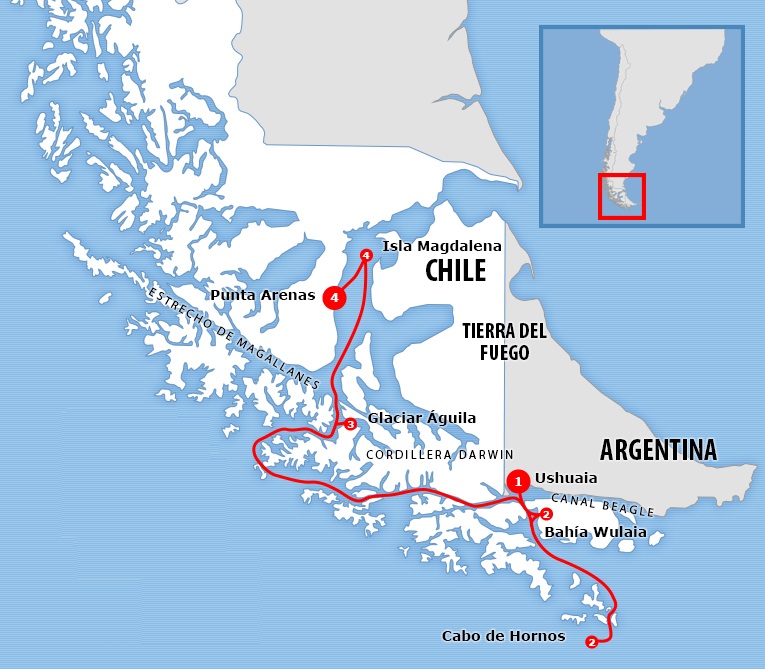   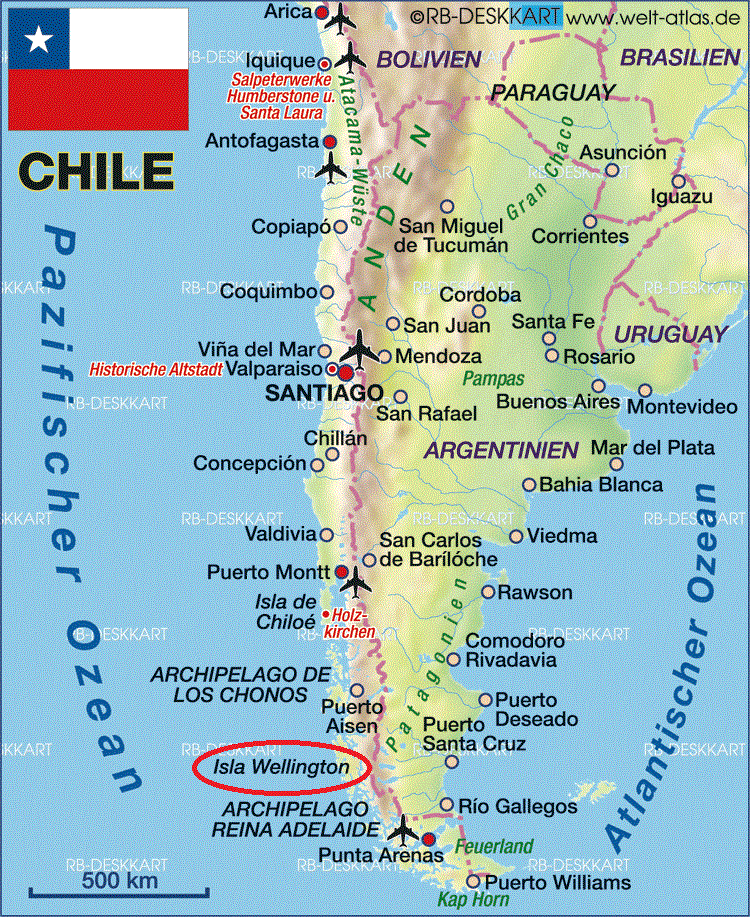 
 
Descubren que la proporción áurea de la bandera de Chile era la más perfecta del mundo: alguien cometió el sacrilegio de cambiarla según los matemáticos
Los antiguos griegos develaron algunos de los misterios matemáticos de la proporción áurea. Por ejemplo, propusieron la primera construcción exacta de un pentágono regular usando regla y compás. Ellos también fueron sensibles a las propiedades estéticas y lo implementaron en el diseño de decoraciones y construcciones.
De hecho, la letra griega ϕ (phi) fue acuñada en honor al célebre escultor Fidias, quien siguió patrones áureos en la elaboración de las esculturas que decoraban el Partenón de Atenas, según publica el diario El País de España.
En cuanto a banderas, la proporción entre el largo y el alto de la de Togo es igual a ϕ (phi) Sin embargo, la que despliega las proporciones áureas en su máximo esplendor es una bandera casi olvidada, aquella con la que Chile firmó su independencia hace 200 años.
Al igual que varios países de Latinoamérica, el proceso independentista chileno se inspiró en las ideas libertarias e iluministas de Francia y EE.UU. recogidas, entre otras, por las logias masónicas. Los colores elegidos para la bandera del país naciente, blanco, azul y rojo, son una muestra evidente de esto. Más aún, su diseño geométrico perfecto revela una conexión muy profunda. En él, ϕ aparece en varias proporciones: entre los largos de los campos blanco y azul entre el alto de la parte azul y el diámetro de la circunferencia en la cual se inscribe la estrella, y entre las partes del lado azul delimitadas por las proyecciones de los ejes de la estrella.
La última propiedad se logra gracias a que el sector azul corresponde a un rectángulo especial, en el cual se despliega una configuración angular de 36, 72, y 108 grados, muy similar a la que aparece en un pentágono regular.
Varios misterios rodean a este diseño. ¿Quién lo hizo? ¿Por qué no se guardó ningún registro? ¿Quiénes poseían este conocimiento y se encargaron de enseñarlo hasta fines del siglo XIX? ¿Por qué nadie dio testimonio de la presencia de la razón áurea por casi 200 años, hasta que el filósofo y experto en estética chileno Gastón Soublette dio con ella?
Increíblemente, todas estas preguntas siguen sin respuesta. Sobre el diseño, se supone que este habría sido en parte ideado por el libertador Bernardo O’Higgins, correspondiendo la implementación técnica a un ingeniero militar. Aquí la opinión de los historiadores se divide: algunos postulan a Antonio Arcos y otros a Gregorio de Andía y Varela. Una curiosidad: ambos eran de origen español, pero intervinieron en favor de Chile durante la guerra.
La Bandera de la Independencia es conservada en el Museo Histórico Nacional de Santiago. En 1912, las proporciones de la bandera chilena fueron modificadas (y simplificadas), perdiéndose así gran parte del simbolismo de este emblema. Fue un verdadero sacrilegio geométrico.
https://cambio21.cl/tendencias/descubren-que-la-proporcin-urea-de-la-bandera-de-chile-era-la-ms-perfecta-del-mundo-alguien-cometi-el-sacrilegio-de-cambiarla-segn-los-matemticos-5c254030aa2d74685c268a78
|
|
|
|
Réponse |
Message 28 de 38 de ce thème |
|
|
|
|
Réponse |
Message 29 de 38 de ce thème |
|
|
|
|
Réponse |
Message 30 de 38 de ce thème |
|
|
|
|
Réponse |
Message 31 de 38 de ce thème |
|
|
|
|
Réponse |
Message 32 de 38 de ce thème |
|
|
|
|
Réponse |
Message 33 de 38 de ce thème |
|
|
|
|
Réponse |
Message 34 de 38 de ce thème |
|
|
|
|
Réponse |
Message 35 de 38 de ce thème |
|
|
|
|
Réponse |
Message 36 de 38 de ce thème |
|
|
|
|
Réponse |
Message 37 de 38 de ce thème |
|
Stone-Made Chinese Burial Pyramid of The 'Tomb of the General' in Ji'an, Jilin of the Goguryeo Kingdom (37 BC – 668 AD). Qin Shi Huang's Pyramid was square based soil cone with the earliest Chinese pyramid in Niuhelian c14 dated now to 3500-3000 BCE
More Than Coincidence: Identical Pyramids with Model of World with Mercury Filled Rivers/Oceans - China's 1st Emperor and Mexico's Teotihuacan Pyramid
Veli Albert Kallio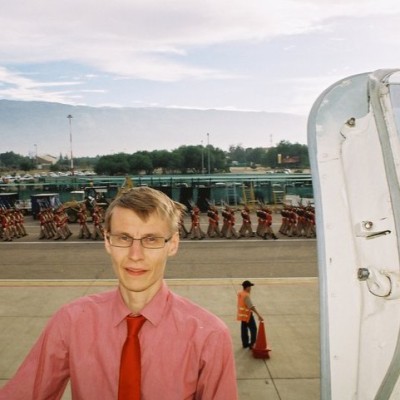
Veli Albert Kallio
Vice President at SRS, albert_kallio@hotmail.com
Fecha de publicación: 26 ago 2021
EXTRAORDINARY CLAIMS REQUIRE EXTRAORDINARY EVIDENCE - CENTZON TOTOCHTIN (144,000) CULTURAL DIFFUSION FROM ASIA
Evidence Giving for 2023 Moon Flight Application to Promote Ethnoclimatology Studies for Understanding Past Climates and Palaeofuture Climate Change Risk
The similarities of Japanese Amaterasu-sun hiding in the underworld with cold climate ruling as supreme for 799 autumns and springs until on the 800th season (the 400th spring) when the sun "awakens" to warm the world once again. Its time amounts to 800 seasons x 180 days = 144,000 days in total which is same as the Aztec climate age of Centzon totochtin, 400 rabbit-eating 'mad' years before our world warmed and flooded like in Codex Chimalpopoca in Mesoamerica (both based on even earlier Sumerian Kings List from Iraq in the Middle East where the same 144,000 days long cold period began in Sumer during the reign of ensi-king Alalngar and was finally ended during the reign of ensi-king Dumuzid).
Long distance cultural diffusion has been denied for long time by many observers despite a curious similarity between Asian and Mesoamerican moon rabbits traditions has been noted and when the Mesoamerican game patolli's similarity with a board game in India was noticed by the famous discoverer and explorer Alexander von Humboldt already in the 19th century. Here is presented now - yet another - even more convincing and specific evidence on the long distance cultural diffusion and the period and reasons why it may have occurred.
References and links are enclosed here because such a wide variety of extremely specific archaeological and cultural evidence is presented below for the reader who may not be an expert in all of the different study areas. I have put this as a section on our conference paper comments on diffusion of Sumerian Kings List that is currently on review and receiving comments in Academia here: https://www.academia.edu/s/1366570369?source=news
Qin Shi Huang (秦始皇陵), the First Emperor of China built a pyramid-shaped 76-meter-tall burial mound for himself. Inside was placed a model of the world with the model of sky above it. On this model of the world, liquid mercury was used as a substance to simulate the hundred rivers, the Yangtze, Yellow River, and the Great Sea, and set to flow mechanically: above was representation of the heavenly constellations and below it were the features of the land. https://en.wikipedia.org/wiki/Mausoleum_of_the_First_Qin_Emperor https://en.wikipedia.org/wiki/Chinese_pyramids#Qin_dynasty_mausoleums_near_Xi'an,_Shaanxi
Now it is reported from Mexico that the Teotihuacan Pyramid has similar mercury feature of the landscape: "The tunnel that Gómez-Chávez's team is excavating was found in 2003 and has yielded thousands of artefacts including pottery, sculptures, cocoa beans, obsidian, animal remains and even a miniature landscape with pools of liquid mercury. Archaeologists are still trying to understand why ancient people created the tunnel and how they used it." https://www.livescience.com/flowers-bouquet-ancient-mexico-pyramid.html
The resplendent lakes of mercury under the glittering sky of powdered pyrite as twinkling stars produce the model of cosmos:
"Even more remarkable was a miniature mountainous landscape, 17 metres underground, with tiny pools of liquid mercury representing lakes. The walls of the tunnel were found to have been carefully impregnated with powdered pyrite, or fool’s gold, to give the effect in firelight of standing under a galaxy of stars." https://www.theguardian.com/artanddesign/2017/sep/24/teotihuacan-pyramids-treasures-secret-de-young-museum-san-francisco
Teotihuacan was a large, multi-ethic city that was increasingly cosmopolitan conurbation within Mexico at the time of the First Emperor and by then about two centuries old. The city drew its population widely from the Mexican isthmus with the people coming from the coastal areas and Mexican highlands. As such, the cosmopolitan city, Teotihuacan, was readily attracted to anything alien and exotic.
Who these people might have been who brought this Chinese idea about mercury-filled model of the world to be built under a pyramid in Mexico?
"Later in his life, [the ailing First Emperor of China] Qin Shi Huang feared death and desperately sought the fabled elixir of life, which would supposedly allow him to live forever. He was obsessed with acquiring immortality and fell prey to many who offered him supposed elixirs. He visited Zhifu Island three times in order to achieve immortality."
The Western Semitic tradition in Genesis tells that the Garden of Eden was located in the east where Adam and Eve could live as immortals because there was 'a tree of life' to provide them that elixir for immortality. This Genesis story echoes the First Emperor's desire and quest to follow the north and central Asian nomadic people who had been voluminously heading towards east in their quest for finding new lands. For the early Chinese the east had a mysterious large landmass where these multitudes had always been heading for and known just to go and vanish without a trace thereafter.
The tropical land of Guatemala which the Native Americans had discovered and entered during the Ice Ages great climatic cataclysm, the original, first b'ak'tun was the promised land of Paradise of which even Qin Shi Huang, the First Emperor of Qin, or the imperial China may have known through some mythistorical lore about the large eastward people movements across the Beringia as lately after the Warring States period (that had followed immediately after the earlier Autumns and Springs era). Qin Shi Huang wanted to pursue a huge eastward expedition to find a way to a Paradise of the East where the sun resurrected itself from the underworld and where the spring was said to be eternal. Where this land might have been?
Maya "homeland is some of the most beautiful country in the world, dominated by the high range of mountains, volcanoes, and steep-walled plateaus, wrapped in green pine forest, and watered by numerous rivers and waterfalls. Its high elevation keeps the climate comfortably cool in the summer, while its location in the tropics prevents the extreme cold temperatures usually associated with mountainous environments. Guatemala's boast of being the "Land of Eternal Spring" is no exaggeration." Allen J. Christenson: "Popol Vuh the Sacred Book of the Maya - The Great Classic of Central American Spirituality, Translated from the Original Maya Text", Introduction, p. 26.
So, the First Emperor wanted to send expedition to the East where some sort of paradise awaited people heading there and commissioned the Great Expedition to the East imagining this way to discover the route to that source of immortality in the East assuming it being the reason why all those multitudes had disappeared there since the time immemorial:
"In one case he sent Xu Fu, a Zhifu islander, with ships carrying hundreds of young men and women in search of the mystical Penglai mountain. They were sent to find Anqi Sheng, a 1,000-year-old magician whom Qin Shi Huang had supposedly met in his travels and who had invited him to seek him there. These people never returned [from the East expedition], perhaps because they knew that if they returned without the promised elixir, they would surely be executed. Legends claim that they reached Japan and colonized it." Ong, Siew Chey. Marshall Cavendish. (2006). China Condensed: 5000 Years of History & Culture. ISBN 981-261-067-7, 978-981-261-067-6. p. 17.
Anqi Sheng's considerable age is explicable as a reference to 1,000 lunations. The moon centred in the ancient mythology about the Underworld due to its association as the ruler of the night skies. Anqi Sheng as a man of thousand lunations would have reached the age of 76 years as one solar year (or a cycle of annual seasons) consists of thirteen lunation's of 28 days (13 lunations x 28 days = 364-day year.) Hence, Xu Fu, consulted a 76-year old senior practicing shaman Anqi Sheng who himself was nearing his own death. The respect of seniority in his age only contributed to the credibility of the shaman's claims to the emperor.
Archaeologists are trying to understand why ancient people created the tunnel [in the Teotihuacan Pyramid] and how they used it (where the flowers were found with the model of mercury seas and rivers). This seems to coincide with the following superstitions on above:
"It is also possible that the book burning, a purge on what could be seen as wasteful and useless literature, was, in part, an attempt to focus the minds of the [First] Emperor's best scholars on the alchemical quest. Some of the executed scholars were those who had been unable to offer any evidence of their supernatural schemes. This may have been the ultimate means of testing their abilities: if any of them had magic powers, then they would surely come back to life when they were let out again." Clements, Jonathan (2006). The First Emperor of China. pp. 131, 134. This echoes Popol Vuh Maya epic's idea in Guatemala where Hunahpu-sun sacrifices himself by jumping into the fire in the trials of the Lords of Xi'balb'a (Underworld) then surprisingly springing back to life (as the sun resumed its earlier warming potency after the cold b'ak'tun period of 144,000 days of the cold climate era, or until 799 autumns and springs period had passed in Japan for Amaterasu-sun to emerge from the underworld cave). The Demon Lords of the Underworld, Xi'balb'a, try to iterate the trick of Hunahpu-sun and jump into the fire to burn, but are so tricked by Hunahpu to defeat themselves in the process (as being unable to repeat the feat of Hunahpu-sun to resurrect themselves back to life from the all consuming fire). This seem to be a reflection of Holocene Thermal Optimum (Maximum) when sun went to overdrive due to era's permafrost melting maximum releasing maximum methane and nitrous oxide load to overheat world's climate prior to their sudden disappearances (as climate-warming methane oxidises very fast). It seems that North Asian shamanistic feat is shared here between the early Chinese and Mesoamerican society as the Lords of the Underworld get defeated by the overpowering fire while sun emerges out of it with its original climate warming capacity.
In Chinese lore this climatic overdrive of the sun (the 10 suns' era) during methane-infested air of Holocene Thermal Optimum ended when Emperor Yao orders the archer Yi to shoot the excessive suns away leaving just one sun surviving (our present sun). The atmospheric withdrawal of methane by its oxidation past Holocene Thermal Maximum was very rapid and it was soon feared that the cold and dark ages would again return: the world might go back to the Cold Age - and this time it might end up even far worse than what it did the first time: the cooling and dimming of sun's power might even result a completely dark and frozen world that could be even worse than before. Luckily, Di Xun, the god of the eastern heavens came here to help and stop the earth's thermostat being turned too cold and so he banishes - or exiles - the overly keen archer Yi eternally (as all methane had by then oxidised away and so had ceased its climate warming potential). The reduction in the cooling occurs as less climate-warming carbon dioxide replaces overly strong methane. It is this age of fire that the early mythistorians seem to recollect the era of the excessively fiery Hunahpu-sun that jumps into the fire to re-emerge for our normally potent age of sun while in the process destroying the Lords of the cold and dark underworld of Xi'balb'a who perish now eternally in the process (as the stable Holocene climatic equilibrium establishes itself).
It is obvious that no mortal could ever do the trick of neither Amaterasu-sun nor Hunahpu-sun and resurrect himself back to life from the consuming fire and the First Emperor's test would appear to us insane what he demanded from his magicians as a proof of their skills.
In the Mediterranean cultural sphere during the Graeco-Roman period, the Eleusinian Mysteries were initiations held annually for the cult of Demeter (the goddess of the harvest and agriculture) and Persephone/Kore (the daughter of Demeter and Zeus), that represented the abduction of Persephone from her mother by the king of the underworld, Hades (Pluto). The captive Persephone (aka Sumerian Inanna) became the queen of the underworld, but her return to the surface was seen as the embodiment of spring, and the personification of the agricultural cycle. Her central myth served as the context for the sacred rites of regeneration, along with rites known as the aporrheta (“unrepeatables”), which likewise reminded the mortals that no one except the Sun-god should claim for death and resurrection from Hades.
There is even more to add to the vanities of this delusional and superstitious first emperor:
"Since the [First] emperor was afraid of death and "evil spirits", he had workers build a series of tunnels and passageways to each of his over 200 palaces, because traveling unseen would supposedly keep him safe from the evil spirits." This idea of misleading the underworld spirits by tunnels may also be reflected in the thoughts of the Mexican pyramid builders when they incorporated this imported idea of building the mercury sea under the Mexican pyramid (like the First Emperor of China was commissioning across the ocean). Indeed, sun was thought to be traveling in a tunnel beneath the feet from the sunset in the sky of the west to re-emerge in the sky of the east at sunrise - being victorious and able to hide from the destructive spirits within the Underworld during its dangerous daily journey - hence the 'solution' to protect the dead would be found by constructing these grave tunnels.
If above cultural diffusion is followed, so the Teotihuacan Pyramid tunnels would have been used to defuse and hide the superstitious ruler from these evil poltergeist-like spirits in the underworld realms like his Chinese counterparts feared. It also bears to be noted that the flowers in the Teotihuacan pyramid tunnel as a symbol of 'spring' and 'fertility of plant life' of Quezalcoatal-serpent is also part of Dumuzid fertility-cult in Sumer (also known as the worship of Tammuz or Demeter-Persepone), the ruler who is said to have brought this 144,000 days lasting 'great tribulation' to its end with his reign "marrying" with the land fertility's god Inanna (Ishtar). In Mesoamerican ethnoclimatological tradition this is associated with the weather and death of plant life related to 144,000 day period, 400 tuns, which another Maya tradition calls the era of mud people (permafrost age). In its Sumerian version Dumuzid's "marriage" with Inanna (Ishtar) of land fertility god who had been forced to undress and ultimately became completely naked and barren like the permafrost soils are mud without plant life. Inanna remains behind the seven locked gates of the underworld until her "rescue" by the reign of ensi-king Dumuzid who was later mythologised as a god. This seems also to tally well with Quetzalcoatl, a Mesoamerican concept of "feathered serpent", god of grass and plant life that covered the barren "naked" soils once the sun's power warmed the world after the cold ages when sun resided locked within the 7 caves.
Teotihuacan "underworld" tunnel beneath the pyramid had "Numerous pieces of pottery, along with a sculpture depicting Tlaloc, a [blue coloured sky] god associated with rainfall and fertility, were found beside the bouquets", Sergio Gómez-Chávez, an archaeologist with Mexico's National Institute of Anthropology and History (INAH) added.
Sunetta's Seven Suns ethnohistory of the Ice Ages in Asia which was exhaustively cited by Siddharta Gautama (Buddha) in Tripitaka (the Three Palm-leaf Manuscripts Collection) describes the Ice Ages beginning as a period of intensifying droughts followed by sea level falling up to 7 palm trees height with Sundaland exposing hundreds of miles of new land. The period then began seeing increasing nucleation of gases in magmas and volcanoes.
The above would suggest that the Chinese "East Expedition" party pursued their escape from the First Emperors fury first to Japan and then at least some of them further pursuing their journey as far east and north as they could go and their delegation eventually becoming accepted as valued refugees within the Mesoamerican royal courts. Their motivation was to pursue journey as far east as they possibly could, via Japan, others then deciding to go ever further north and east via the Kuril Islands, the Aleutian Islands, and then down the west coast of North America until the final 'safe haven' was reached in Mesoamerica. What happened to the party there was to become scholars, advisors and magicians for the Mesoamerican rulers and contributing ideas from their own beliefs to re-enact the model of the mercury rivers and oceans under a Mexican pyramid. It is very hard to explain how so many highly specific unusual acts could occur just as a coincidence without common author.
Sima Qian, Shiji, Chapter 6 actually cites that the East Expedition Party did manage to find asylum out of reach of the fury of the Chinese Emperor according to the Second Emperor:
"After the burial [of the First Emperor in the pyramid mound], it was suggested that it would be a serious breach if the craftsmen who constructed the mechanical devices and knew of its treasures were to divulge those secrets. Therefore after the funeral ceremonies had completed and the treasures hidden away, the inner passageway was blocked, and the outer gate lowered, immediately trapping all the workers and craftsmen inside. None could escape. Trees and vegetations were then planted on the tomb mound such that it resembles a hill." Sima Qian, Shiji, Chapter 6 司马迁 (1982). 史记. 卷六.秦始皇本纪: 中华书局. ISBN 9787101003048 . Chinese Text Project: Shiji, original text: 九月,葬始皇泰山。始皇初即位,穿治酈山,及并天下,天下徒送詣七十餘萬人,穿三泉,下銅而致槨,宮觀百官奇器珍怪徙臧滿之。令匠作機弩矢,有所穿近者輒射之。以水銀為百川江河大海,機相灌輸,上具天文,下具地理。以人魚膏為燭,度不滅者久之。二世曰:「先帝后宮非有子者,出焉不宜。」皆令從死,死者甚眾。葬既已下,或言工匠為機,臧皆知之,臧重即泄。大事畢,已臧,閉中羨,下外羨門,盡閉工匠臧者,無復出者。樹草木以象山。https://ctext.org/pre-qin-and-han?filter=d270 https://en.wikipedia.org/wiki/Mausoleum_of_the_First_Qin_Emperor#cite_ref-6
The secret of building model mercury rivers under a pyramid complex in Mesoamerica could be nobody else than the members of this escaping party of desperate Chinese magicians and scientist fleeing from the First Emperor of China who knew from the onset of their irrational commissioning that they could not find that immortality elixir nor the Garden of Eden in the east where the immortality elixir was to be found in the legends.
Typically the evidence criteria for cultural diffusion is defined on how specific the elements of the two cultural traditions are to each other in their separated contexts.
Here we have two unique traditions of mercury being used as an element of the cosmic model of the world as rivers and oceans that are placed in both cases under a pyramid within a tunnel with the symbols of fertility gods, "blue" sky god Tlaloc, 144,000 day long special period, and the spirit world of the underworld with all its associated trials all combined in this rather immense myth cluster that reverberated across the Pacific. This, therefore, provides a new value to ethnoclimatological records about the Ice Ages event in the past and how Palaeofuture Climate Risk Class (PCRC) events remain relevant concern for future climate prediction due to shortness of the perceived duration of the Ice Ages period in the world's ethnoclimatologies.
Thus, the Mesoamerican idealisation of time is derived from the same cluster of believes which can be linked ultimately to the Sumerian Kings List and its cold era from the ensi-king Alalngar to fertility-bringing reign of the ensi-king Dumuzid, followed by the period of unstable warming (the 7 Macaw era) that ends in the Great Flood when the old sea levels returned after the Ice Age as recorded by the etnoclimatologies of the old and new world.
"The First Emperor Qin Shi Huang died from Chinese alchemical elixir poisoning due to ingesting mercury pills, made by his alchemists and court physicians, believing it to be an elixir of immortality." Wright, David Curtis (2001). The History of China. Greenwood Publishing Group. p. 49. ISBN 978-0-313-30940-3 https://archive.org/details/historyofchina00wrig/page/49/mode/2up
Summarising the main point here is that the ageing and increasingly diseased First Emperor of China was feeling his death approaching and decided to lavish all his available resources to equip a lavish expedition to some sort of Garden of Eden in the East to fetch the immortality-giving elixir from there for himself. The members of the expedition, however, somehow got a whiff of the Emperors intentions that they would be killed (perhaps buried with him alive in his grave if [=when] he dies). Alarmed of these insane thoughts of the Emperor they duly left for the East and arrived Japan, but feeling still insecure to seek asylum there from the powerful Chinese emperor they then decided to pursue the archipelago to North East to Hokkaido and then to the Kuril Islands, the Kamchatka Peninsula, and from there via the Aleutian Islands to Alaska, then following the North American west coast to the isthmus where modern-day Mexico lies.
The ageing First Emperor having already felt his death apparently nearing had already commissioned the construction of his grave pyramid mound with its collection of burial goods to go with him to the feared underworld. Of these treasures, the departing party of magicians and alchemists had taken bottles of mercury with them to the lands in the East. Once meeting the Native Americans (Teotihuacans) they then showed this curious liquid that would help their king to reach heavenly realms in the afterlife with the help of the model of the known world to them where the rivers, lakes, and seas were likewise filled by flowing mercury like in the First Emperor's grave goods. This model world of miniature mercury flowing rivers, lakes and oceans was placed between the underworld, and the celestial constellations above. (Alternatively, it was Peruvian sourced mercury from here that had been sold to the foolish First Emperor as the immortality elixir although it was already known there that it would do nothing to improve his health and that he would inevitably die. Hence, it would be best for the magicians and the expedition party themselves to stay behind in safety of Mesoamerica and fool the mercury-mesmerised Emperor once again, this time with the resplendent mercury liquid as if his much desired immortality-giving elixir.) Whatever way mercury moved, it seems that the notion of its immortality giving appeal occurred on both sides of the Pacific Ocean much the same way and the same stupidity.
The motivation of the escaped elixir expedition party of the royal magicians and alchemists was to escape as far as possible from the reach of the mad and increasingly senile First Emperor who had mercilessly killed people in his projects for years. The solution to them was just to quit the expedition and save their own skin to make it out of reach of the First Emperor in a place where he and his spies would never find them. I bet anyone would have done that too if we had been in their trousers!
The importance of this episode is that it proves the connections of the similar traditions on both sides of the Pacific Ocean and that the elixir party used effectively local guides to pilot them to safety out of the harms way. They must have had multiple guides and used gifts given to them to get all the aiding they needed to reach their destiny. For the climate change aspect this means that there is the added layer of credibility to a common source of extremely distant origins on the idea of 144,000 days, 800 seasons, 400 years. For us this is useful as it shows that the ending of the Ice Ages era ice sheets was much faster process according to ethnic histories about the past climates and environments - meaning that the remaining Polar Ice Caps might collapse today in one's own life time.
The Second Emperor's admission of the escaping party with their mercury world and other gifts to get help from people to guide them to the garden of East and immortality available there proves that these people are the same mercury-world model builders that showed these to the Native Americans. Remember in both cases the model of the world was placed under the pyramid mound, and it represented rivers, lakes, and oceans in both cases with some sort of pump to circulate flowing mercury in them. This is so specific artistic creation that it just cannot be a coincidence, here the Second Emperor even admits that the manufacture of Emperor's grave goods was a highly guarded state secret and anyone knowing the mercury world model had to be key palace insider not just any artisan. Therefore, the very people bringing this thing to Mexico had to be from this missing "immortality-giving elixir fetching party" the First Emperor had sent to the east.
Geophysical analysis of mercury and its side components from the First Emperor's grave in China and Mexico must be same as mercury as a rare substance had been unknown in Americas in large quantities and it is one of those imported gifts the elixir party was equipped with to reach its imagined destiny. DNA haplogroup studies of the local Native Americans might also show traces of nobility and artisans carrying Chinese genome. So there are additional possibilities to proof the above narrative that is not just a chance event but proves what many had already suspected after patolli-game, moon rabbits, 13 heavens, fertility gods, sun ages etc.
The discovery of models of the world set under the pyramids both China and Mexico with a hydrological system of lakes, rivers, and oceans filled with liquid mercury bear extremely specific characters that require a common artistic inventor that designed them.
- We have here two grave-goods world models prepared.
- Both models are then placed under two pyramids.
- Both models focus on world's hydrological system
- Both use mercury as their substituting item for water.
- Mercury is immensely rare item in its liquid form.
The Second Emperor Qin Er Shi (秦二世) made contents of the grave of the First Emperor Qin Shi Huang (秦始皇) a highly guarded state secret. Therefore only select few of the Royal Court knew the goods that what went into the emperor's grave - after the Great Expedition to the East was absconded by Xu Fu (徐福) and his entire expedition party. It is here asserted that appearance of the above similarities prove that the expedition used its massive resources to go to the extreme east to escape likely death by delusional Chinese emperor and that due to the proximity of Japan to China, it was not thought by the escaping party - under a panic - to be adequate barrier to remain safely in exile there.
Many commentators lack understanding in the specifics of this case of the manner the representative artwork to accompany rulers in underworld and the uniqueness of the idea of using mercury to fill in water features in the hydrology models in both cases. Many observers are unaware of Xu Fu's exile motives and so fail to recognise the extremely unusual inherited features and thus mixes up with generic trivia to sui generis evidence here of obvious artistic specificity on such an extremely high degree that cannot - probabilistically - be coincidental in any practical of sense (as being a probable chance).
It further can be suggested from above that it is likely mercury having been brought by Xu Fu's party from China amongst various most precious gifts vested by the First Emperor Qin Shi Huang for the purposes of successfully obtaining immortality elixir of the East. Instead of returning back to China empty-handed the party decided to stay safe in Mexico which had hierarchic society somewhat similar to their own than the dissimilar nomadic First Nations (Native Americans) or the very distantly Japanese Ainu-related Na Dene people or Alaskan Inuit even further back in the north from where they have come along the Pacific Coasts. The favourable southern climate would have also been a significant consideration for the party to settle in Mexico rather than Alaska or more northern parts of North America and for good reason Guatemala and the highlands may have been thought as that legendary Eden of the east as it was perceived as the land of eternal spring.
Written to Yusaku Maezawa 前澤友作 the Patron of 2023 Lunar Expedition for SpaceX corporation of Elon Musk by Veli Albert Kallio, Vice President, Sea Research Society
https://www.linkedin.com/pulse/more-than-coincidence-identical-pyramids-model-world-mercury-kallio |
|
|
|
Réponse |
Message 38 de 38 de ce thème |
|
The concept of tone words plays a significant role in effective communication, especially in project management. If you're working on assignments related to this or need expert assistance, our Project Management Assignment Help services provide the support you need to succeed. Let's explore strategies and tools to refine your work |
|
|
 Premier Premier
 Précédent
24 a 38 de 38
Suivant Précédent
24 a 38 de 38
Suivant
 Dernier
Dernier

|
|
| |
|
|
©2025 - Gabitos - Tous droits réservés | |
|
|











